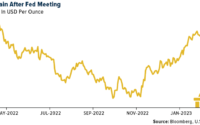On the First Day of the Fed’s Money Market Fund Bailouts, JPMorgan Funds Borrowed $8.97 Billion – 32 Percent of the Total
By Pam Martens and Russ Martens: April 11, 2022 ~

Jamie Dimon Sits in Front of Trading Monitor in his Office (Source: 60 Minutes Interview, November 10, 2019)
On Thursday, March 31, the Federal Reserve released the names of the Wall Street trading houses and the amounts they had borrowed under three of the Fed’s emergency bailout programs. The data included the Fed’s repo loans for the first quarter of 2020 — the Fed is releasing the repo loan information after a two-year lag on a quarter-by-quarter basis, thus obfuscating a clear snapshot for the life of the program; the Fed’s Primary Dealer Credit Facility (PDCF); and the Fed’s Money Market Mutual Fund Liquidity Facility (MMLF). The Fed also released on March 31 the transaction details for its Commercial Paper Funding Facility but that essentially just showed which commercial paper had become toxic on Wall Street while the other three programs illustrated which units of the mega global banks had become illiquid and needed Fed bailouts stretching over many months.
As we have previously reported, the Fed’s release of the repo loan transaction data was met with a complete news blackout by mainstream media. That news blackout continued with the release of the quarterly data on March 31. The news blackout has extended as well to the Primary Dealer Credit Facility and the Money Market Mutual Fund Liquidity Facility. Bloomberg Law did publish a superficial article on the Primary Dealer Credit Facility but it put the information behind a paywall.
The reason for this news blackout may have something to do with mainstream media’s God-like worship of the Fed and its love fest with Jamie Dimon, the Chairman and CEO of JPMorgan Chase. As it turns out, units of JPMorgan Chase were among the largest borrowers under the Fed’s repo loans, its Primary Dealer Credit Facility and its Money Market Mutual Fund Liquidity Facility, despite Dimon’s perpetual bragging about his bank’s “fortress balance sheet.”
The hard, cold reality that Dimon was forced to rely on the Fed for multiple bailouts in 2019 and 2020 does not correlate with the financial guru status that mainstream media outlets have been showering on Dimon for more than a decade (see here, here, and here) despite the bank racking up five felony counts under Dimon’s “stewardship,” which should have been a screaming siren call to the Fed, which supervises JPMorgan Chase.
We have now had time to analyze the Fed’s needlessly labyrinthine transaction data for its Money Market Mutual Fund Liquidity Facility. It shows that 10 of JPMorgan’s money market funds needed to tap liquidity from the Fed on its first day of operation, March 23, 2020. In fact, on that very first day of operation of the MMLF facility, JPMorgan’s money market funds borrowed a staggering $8.97 billion, or 32 percent of the $27.15 billion in funds loaned that day by the Fed’s MMLF.
JPMorgan money market funds’ liquidity problem on March 23, 2020 appears to have centered on JPMorgan’s tax-free money market funds holding billions of dollars in New York City’s Metropolitan Transportation Authority’s (MTA’s) short-term revenue notes. Those were prominent among the instruments submitted as collateral to the Fed for loans from the MMLF. The MTA notes apparently could not be sold by JPMorgan to meet redemption requests without causing the money market fund to break the buck. Money market mutual funds are expected to trade at a stable $1.00 per share. It is known as “breaking the buck” when money market funds trade for less than $1.00 per share. This occurred at several money market funds during the financial crisis of 2008 and increased the panic occurring at the time.
Exactly why JPMorgan’s money market funds held so much money in one municipal issuer’s notes should warrant the attention of its regulators.
JPMorgan was also an outsized user of the Fed’s Primary Dealer Credit Facility. The transaction data released by the Fed showed that at the end of the first 11 business days of operation of the PDCF, on April 3, 2020, the Fed had an outstanding balance in the PDCF of $49.5 billion and the trading unit of JPMorgan had borrowed $14 billion of that, or 28 percent of the total.
JPMorgan’s need to tap the emergency repo loans from the Fed, which began on September 17, 2019 – months before there were any reported cases of COVID-19 anywhere in the world – was also astonishing. According to the quarterly data releases by the Fed for its repo loans, the trading unit of JPMorgan (J.P. Morgan Securities) borrowed $2.59 trillion in term-adjusted cumulative repo loans in the fourth quarter of 2019 and another $3.6 trillion in the first quarter of 2020. (Subsequent data has yet to be released by the Fed, despite it having the option to release all of the data immediately.)
Not only has there been a news blackout by mainstream media on these enormous and inexplicable loans from the Fed to the largest bank in the United States but there has also been zero lack of interest thus far by the Senate Banking and House Financial Services Committees. Engaged and concerned Americans need to call their Senators and Reps in Congress and make that happen.
[ad_2]
Source link


